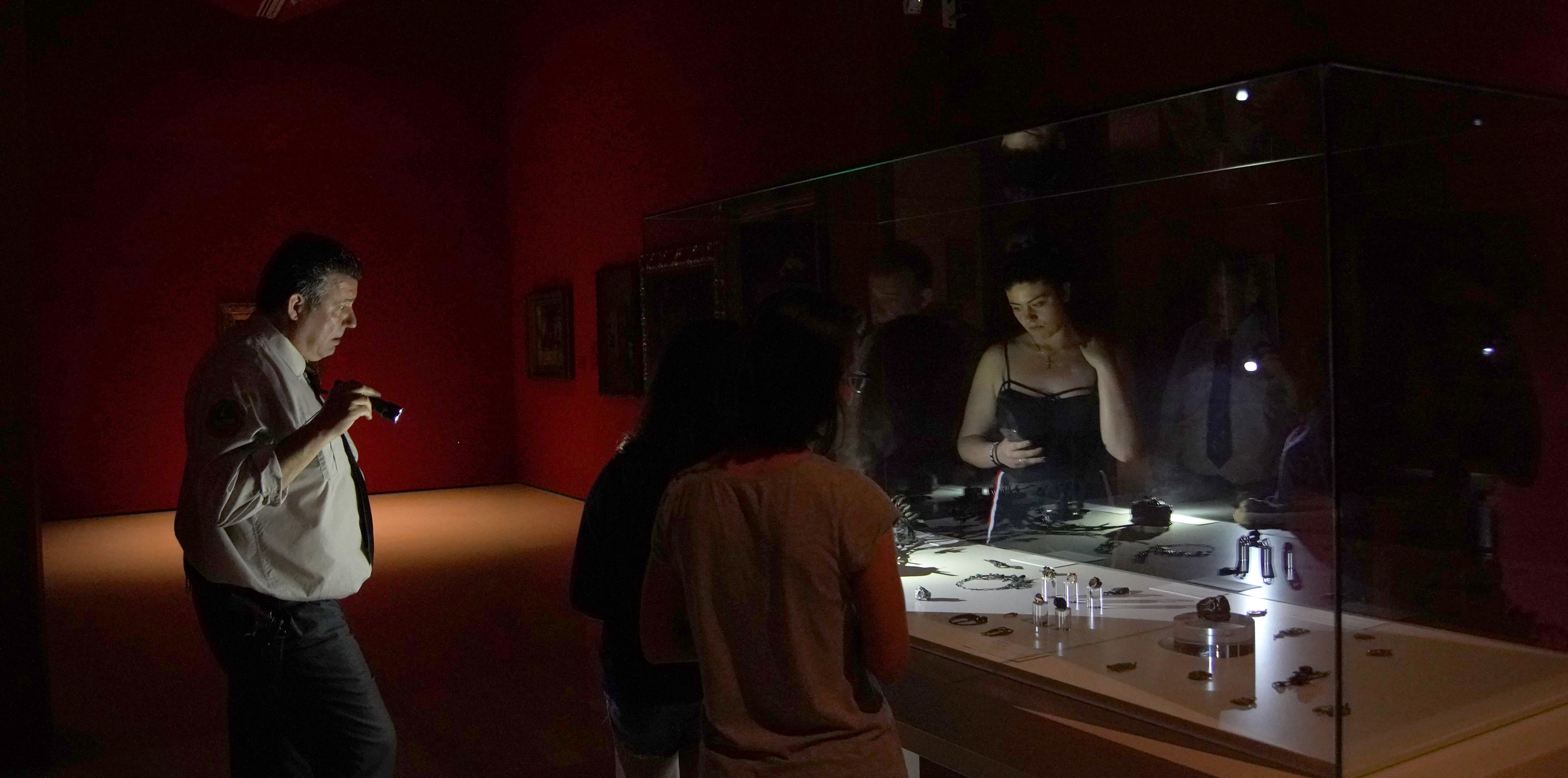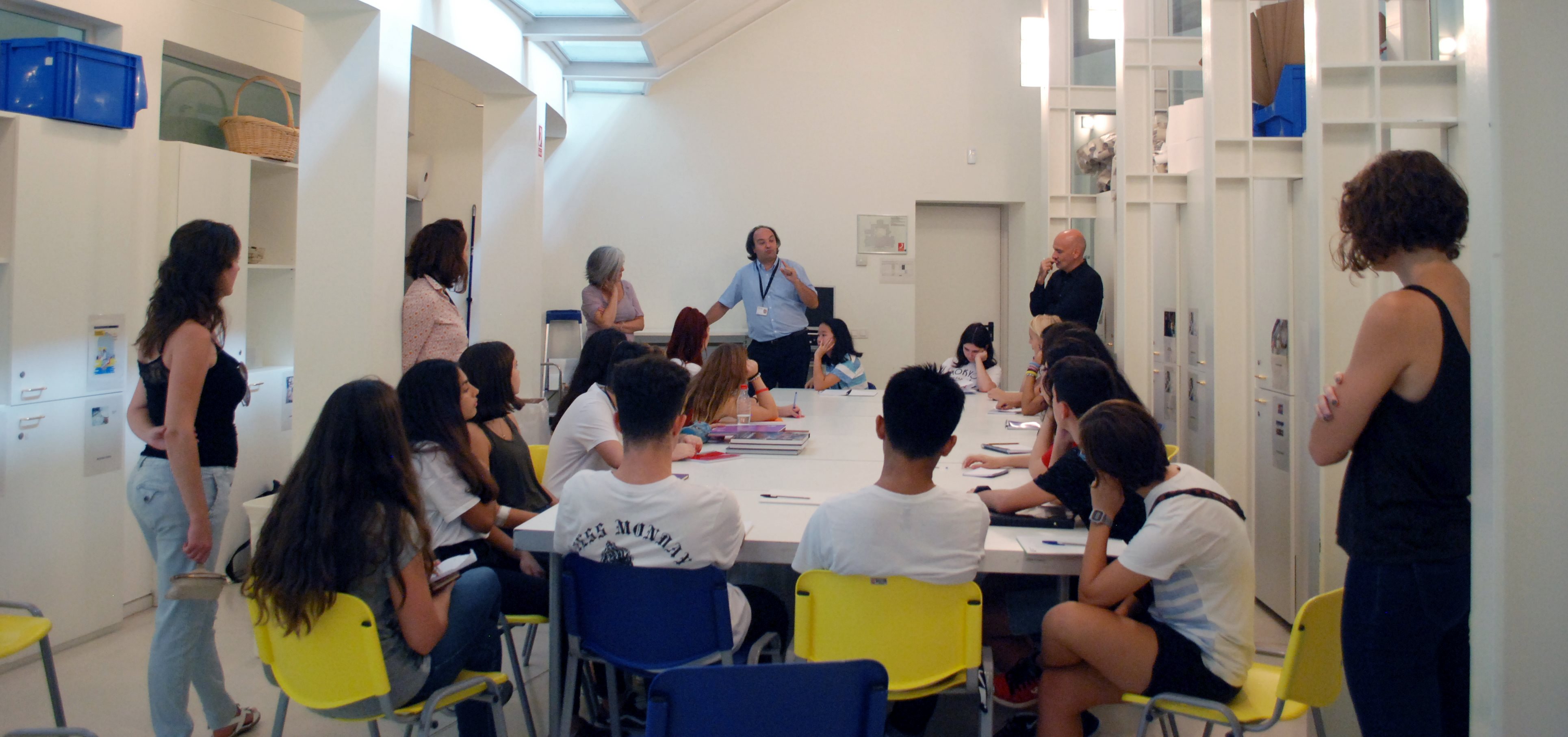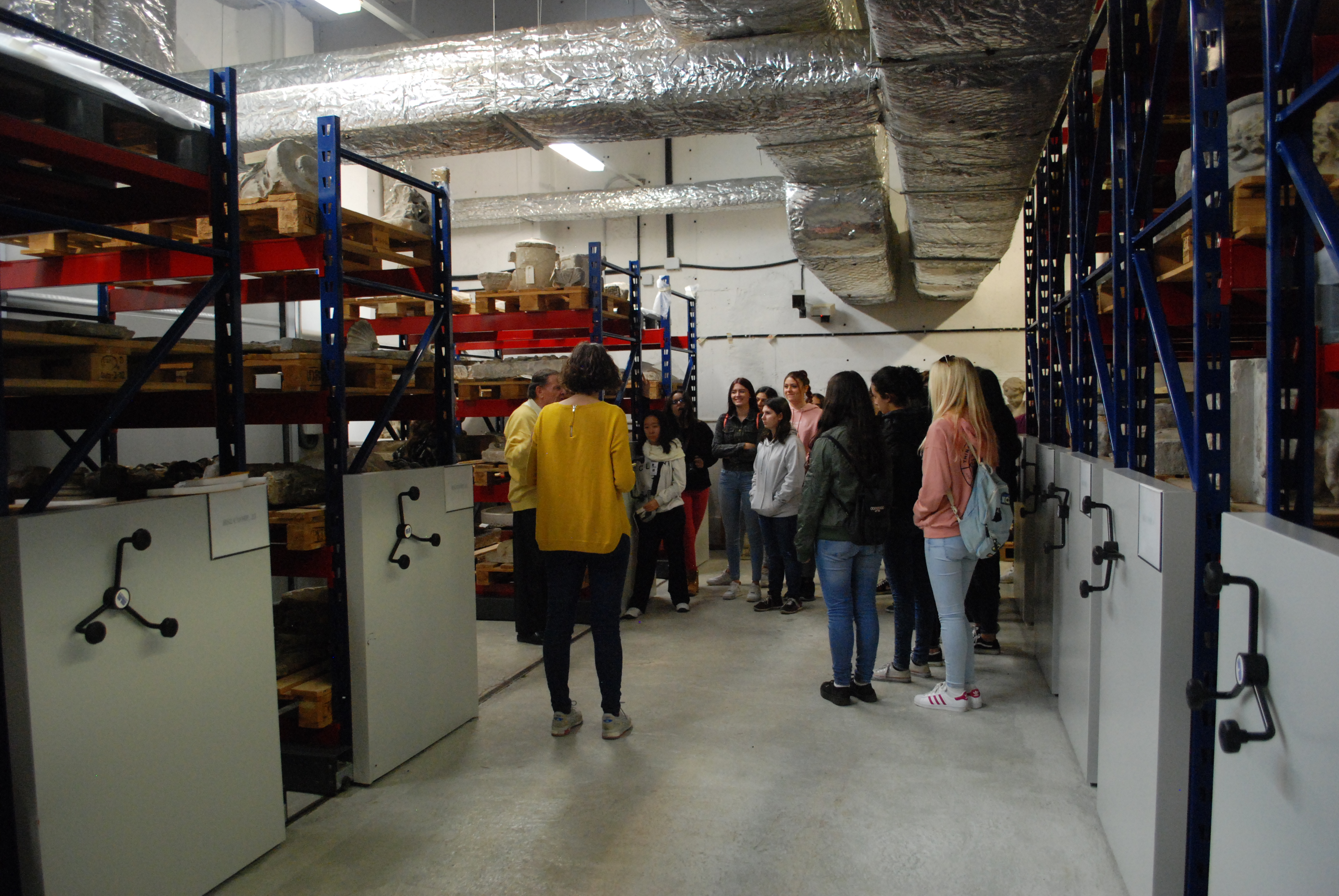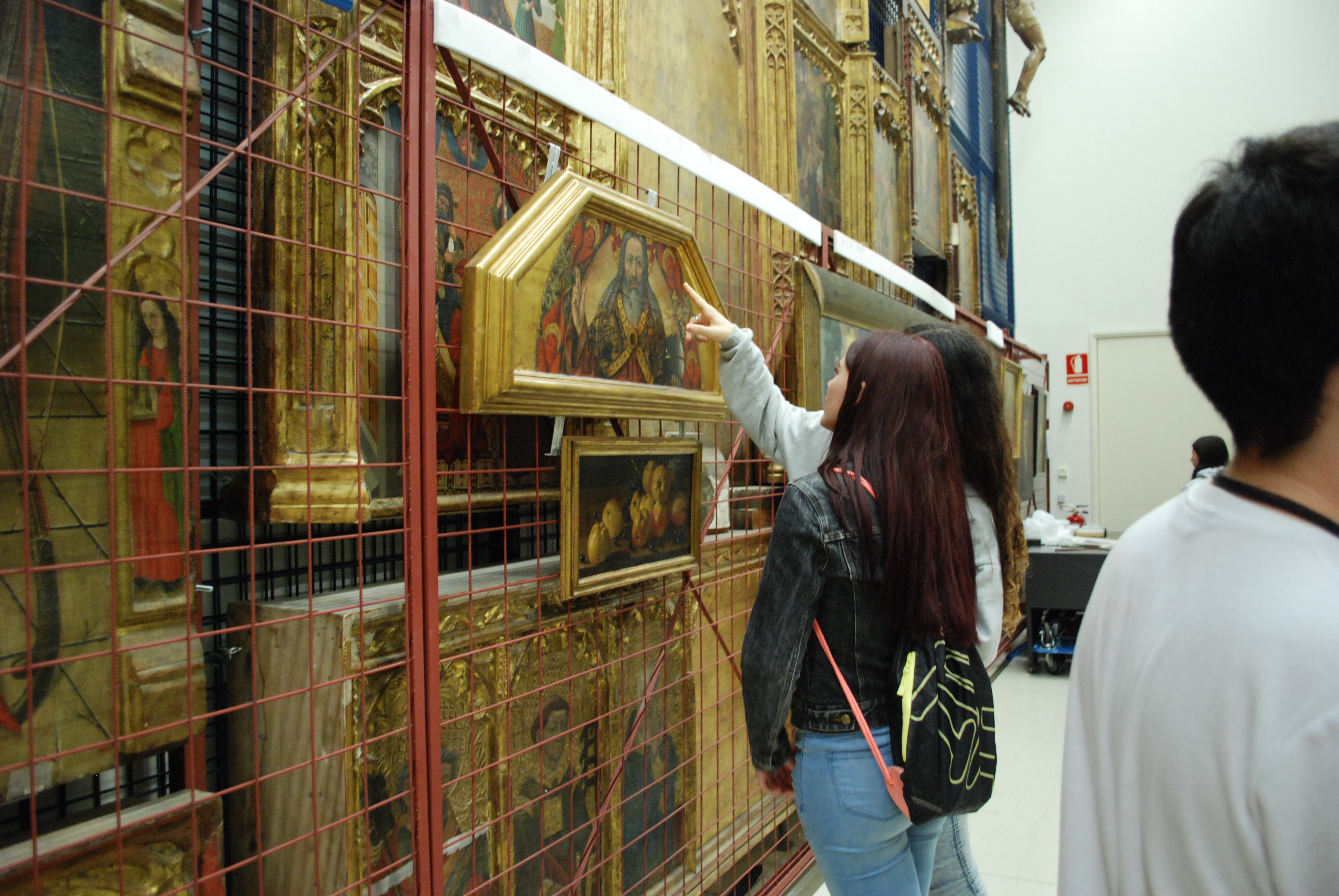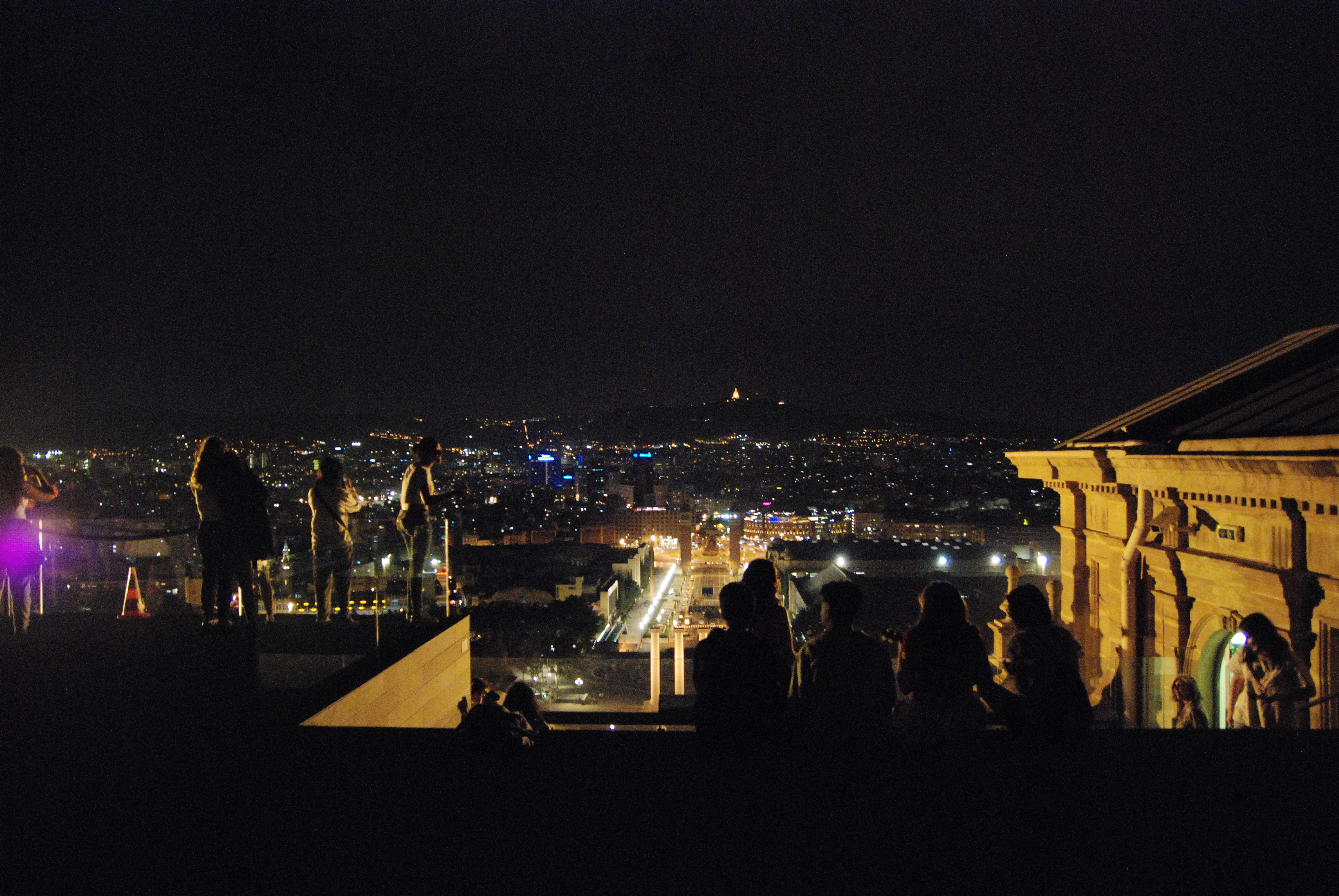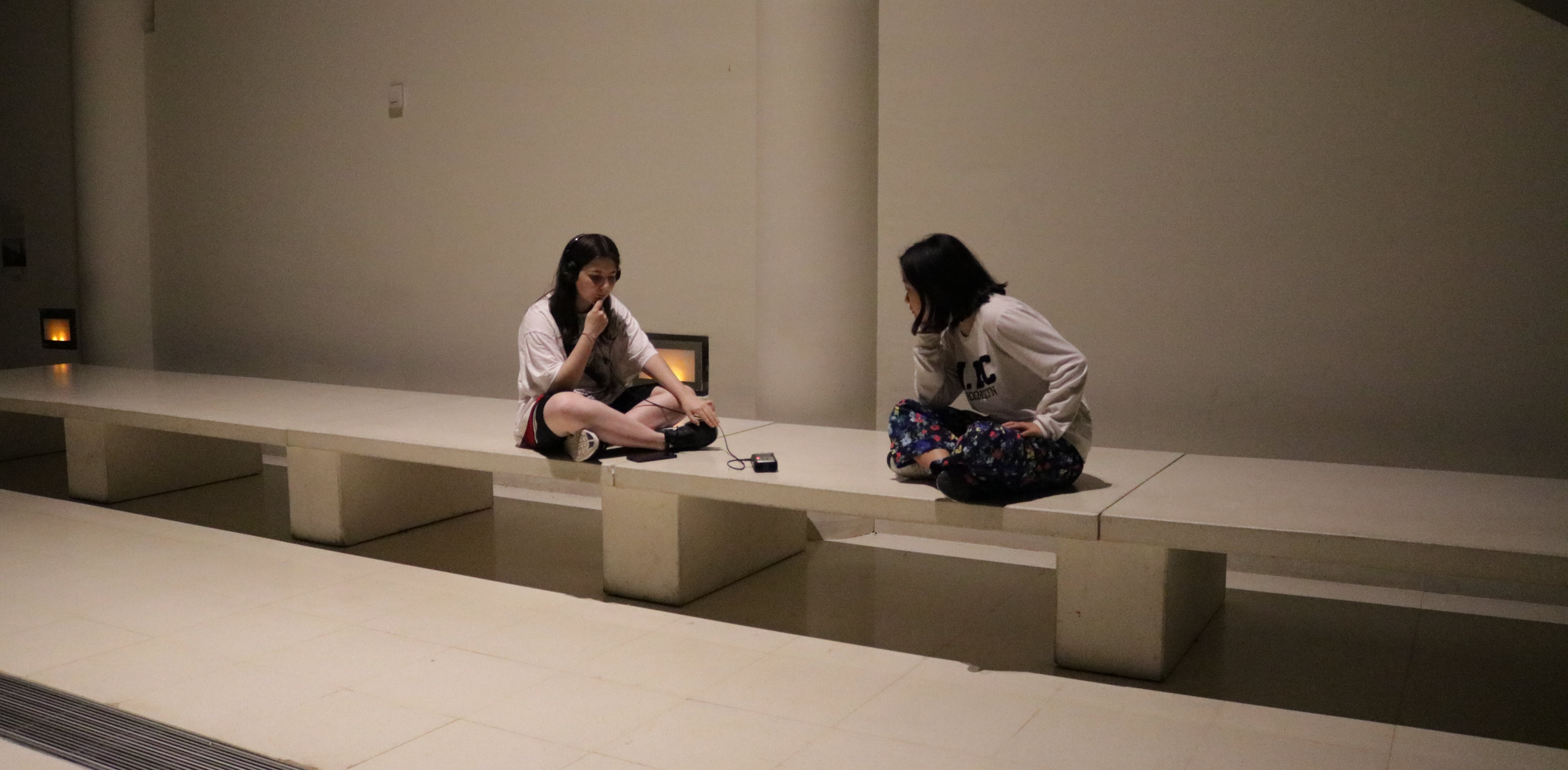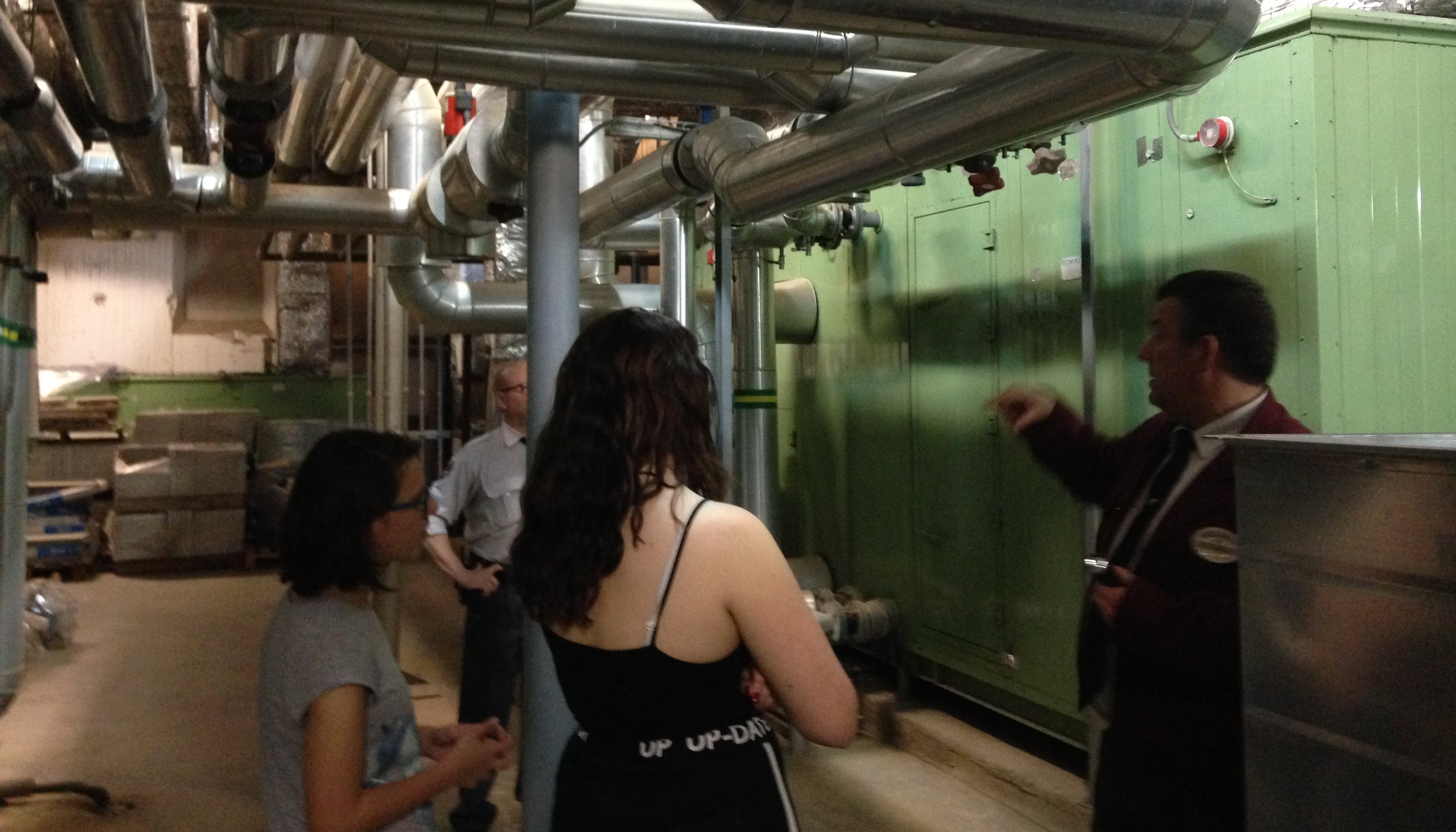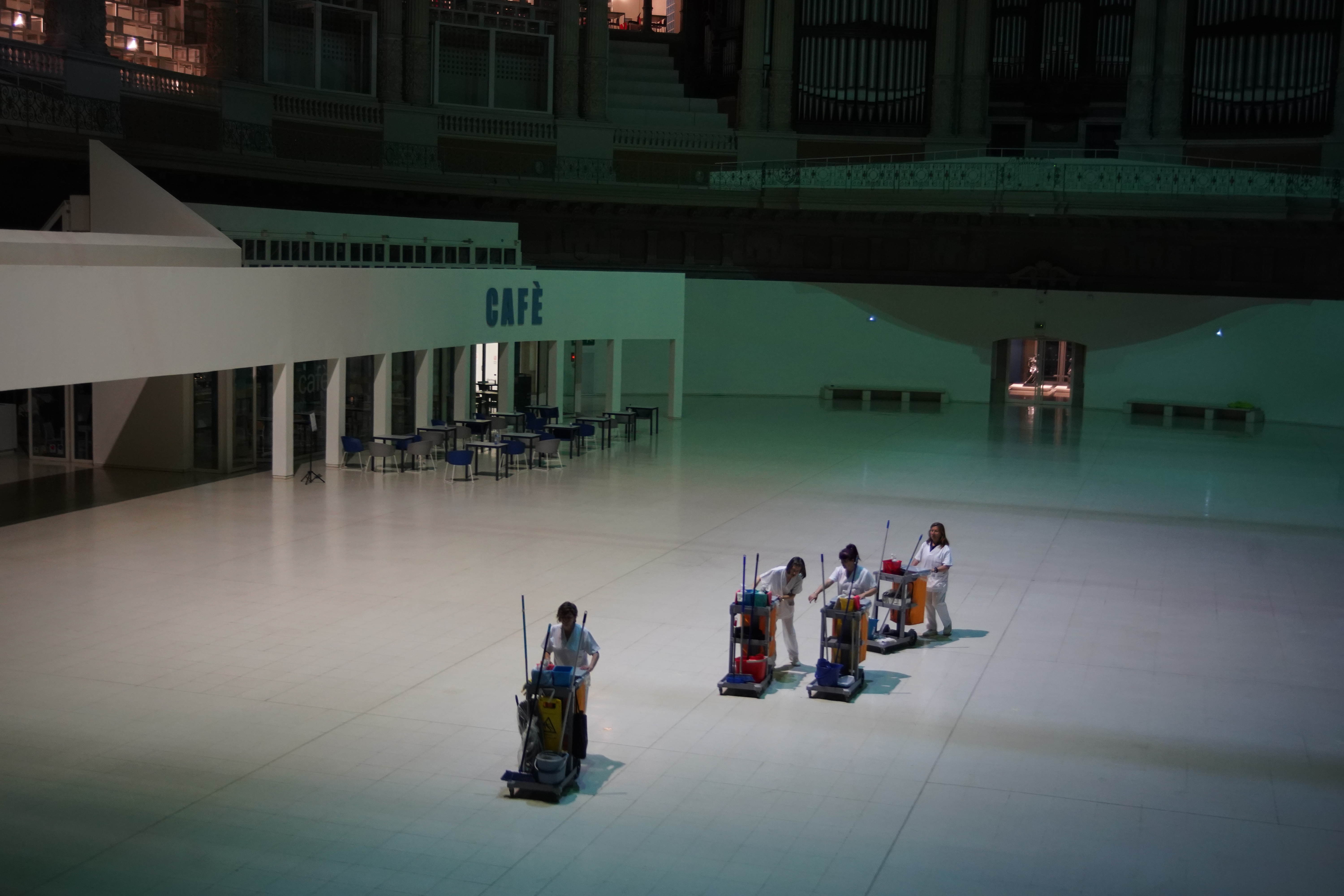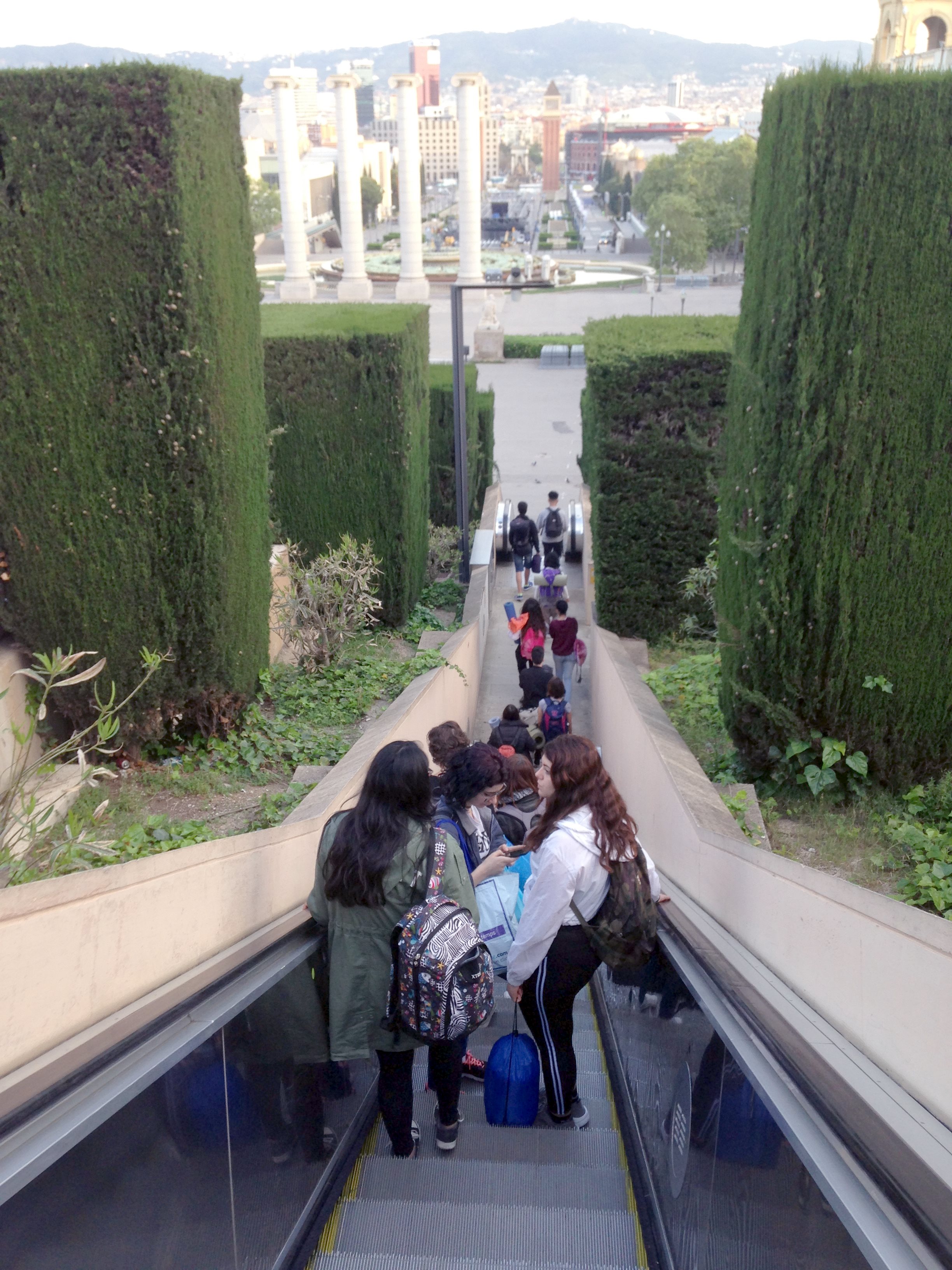Sandra Figueras
A group of boys and girls from the Juan Manuel Zafra Institute from the neighbourhood of Clot of Barcelona, accompanied by the artist Mariona Moncunill and by the mediation team, spent the night of 25th April in the museum.
It was the end of an artistic research that they had been doing throughout the course within the framework of In Residence and the beginning of the resulting project that we had presented a couple of weeks beforehand in the space educArt, From six to six.
Without doubt it has been an intense project for the museum because this time we weren’t only part of the mediating team but the object of the research itself. From the first conversations with the artist, it became apparent that the institution would play a central role and that it would be observed from angles that are not common, highly respecting the views and interests provided by the students.
In a questionnaire that they responded to the beginning of the course about their experiences in the world of art, most of them mentioned they had had some contact with museums, but often in the context of a trip or visit organized by the school. Experiences that had not always been particularly rewarding. Amina, for example, replied:
In primary school I went to many museums and I liked the paintings a lot but I didn’t like the fact that they explained to me what the painting was about or things about the author, I liked to look at the works in peace.
In other cases, however, a special interest and curiosity already existed, Natalia wrote:
I like going to museums a lot, it’s like another world. On the first Sunday of each month when some museums are open free of charge, I always go when I can.
Since the first visit when they met Pepe Serra, the director of the museum, these boys and girls showed a special sensitivity towards art and a lot of curiosity towards everything that the museum and its functioning signified. Many of their initial questions were focused on the restoration and conservation tasks of the works, the management of the spaces and the teams behind the setting up and the exhibitions. With the support of Mariona Moncunill, they also began a freer exploration of the museum, to find progressively and without prejudice what aspects they could be interested in regarding the artistic project they had to do.
Around the end of the course we received their email with the request to spend the night in the museum, in which they justified the reasons for doing so, and they explained the first ideas regarding what they wanted to do:
23/3/2018 8:57
Dear,
We are the In Residence group from the JM Zafra Institute working with the artist Mariona Moncunill. As you know, we are carrying out a research study about the functioning of the MNAC. So far, we have got to know how an exhibition is prepared, how the works are stored and conserved, and we have seen temporary exhibitions, the design process of the posters, etc.
We have visited the museum during the day and now we would like to live some experiences inside the museum during the night. We would like to know about the security outside the opening times to the public, we would also like to live an experience in the Sala Oval when there’s nobody there and to observe the sensations generated by the different rooms during the night. Furthermore, we have thought about visiting the underground and the terraces during the nighttime.
So as to carry out all these proposals we would need to spend the night in the museum and we were wondering if this would be possible. We therefore request your consent and also your collaboration. We promise to take care of the spaces so that this doesn’t cause you any bother.
With this proposal we would like to end up completing the knowledge of the museum and turn it into our final project, which during the month of May we will be presenting to the public in the Educart room. We very much believe that it would be a magnificent experience.
We look forward to receiving your answer and hope that our request will be accepted.
Yours sincerely,
In Residence
4th ESO Juan Manuel Zafra Institute
Even though they had carried out many backstage visits to the museum and had got to professionals from different areas, their views had fixed on the teams charged with perhaps the most invisible tasks, the ones mostly carried out during the hours in which the museum is closed to the public, in spaces that cannot be visited: the cleaning, the security and the setting up of the exhibitions. This was the seed of “from six to six”: a series of actions concentrated during the night so as to highlight this invisibility, that’s why they had to be done from 6pm when the museum was closed to the public and the shift of the nighttime security guards began, until 6am when the work began of the cleaning teams.
That evening and night, the boys and girls showed once again their capacity for organisation and the implication they had with the project. So as to be able to develop the three actions that they had thought about, they were divided up into three working groups, and they spent the evening organizing themselves and rehearsing the actions. There was also time for relaxing prior to beginning the night to have supper and enjoy the views of the museum from the roof terrace and at night.
This is how they described it in the blog that includes the creative process, in which they defined the three actions of that night:
One of the actions was in the Sala Oval, a performance (a play without sound more abstract and to a certain extent more alive), with which we wanted to highlight the importance of the people behind the scenes in the museum ensuring that it functions.
We also carried out an action in the rooms most visited of the museum during the daytime, for example, the room in which the Pantocrator can be found. Our action consisted of recording the sounds/noises of these for 10 to 15 minutes at different times. With high quality recorders, that allowed us to hear the minimum sound produced.
One of the interventions was that of security which consisted of following the security guards on their nighttime rounds. The group was divided into two pairs, while one couple were in the control room with a guard, the other were doing the rounds with three guards, walking through the galleries, the stores, underground….
Once the actions were finished that lasted until the early hours of the morning, the students slept in the educArt space that became the base camp and dormitory and which today is the exhibition space where the project is shown. Around 7 o’clock in the morning, after having returned the trolleys to the women who were already beginning to clean the museum, we left together while crossing with the workers who were beginning to arrive.
In the next article we will share the impressions of the boys and girls once they got back to the institute, in conversation with the students, the teacher and the artist.
Related links
What’s an artist like you doing in a school like this?
Servei educatiu

